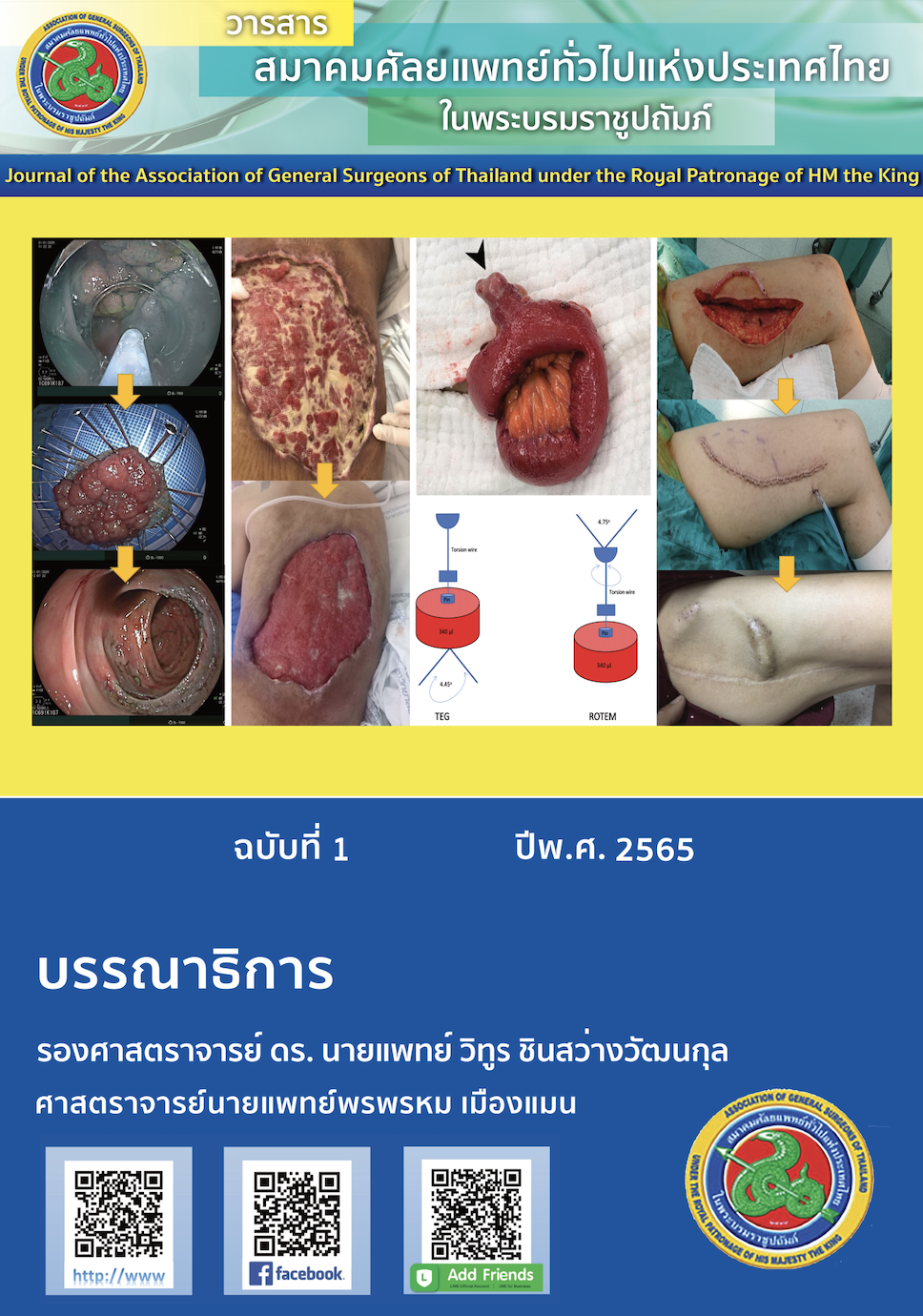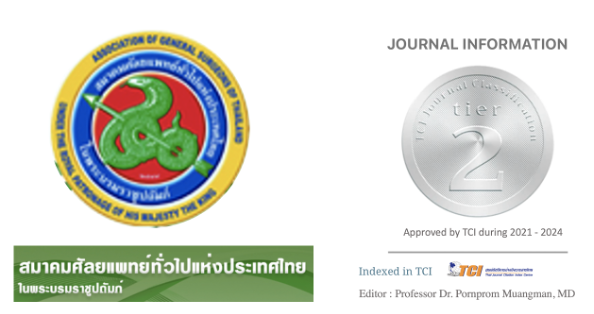The Outcome of Non-Operative Management in High Grade Renal Trauma and related factor
Abstract
Background : Non-operative management (NM) is initially approach in renal trauma. Surgical exploration required in high-grade (grade IV, V), however the success rate challenging NM are increasing in recently reported.
Objectives : To review non-operative management strategy outcome in renal trauma and evaluative associated failure factors.
Materials and Methods : Retrospectively reviewed renal trauma patients between January 2008 – December 2015 included patients’s demographics, injury mechanism, clinical characteristics, laboratory and imaging data. The outcome of management were recorded and analysis the relating factors.
Results : 107 renal trauma patients included in this study. 63.6% are Low-grade and high-grade renal trauma founded 36.4% respectively. NM success rate at 82.2% in low-grade and 61.5% in high-grade group. Univariate analysis revealed hypotension, tachycardia, low hemoglobin (< 10 mg/dl) at presented, high grade renal trauma and finding sings on computed tomography (CT) such as peri- renal hematoma ≥ 3.5 cm, parenchymal infarction and intravascular extravasation were associated with failure non-operated. However, high grade renal trauma is the only failure predictor of NM on multivariate analysis (odd ratio (OR) 13.01, 95% confidence interval (CI) 2.33 – 72.62; P = 0.003).
Conclusions : Most of renal trauma are highly success with conservative treatment. Although high-grade injury is the strongest non-operation failure factor, however, these management still feasible in clinically stable with acceptable outcome and challenging.
Keywords: non-operative management strategy, renal trauma, kidney injury, high-grade renal trauma




